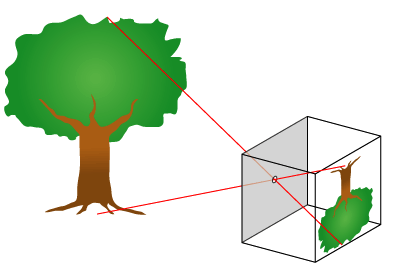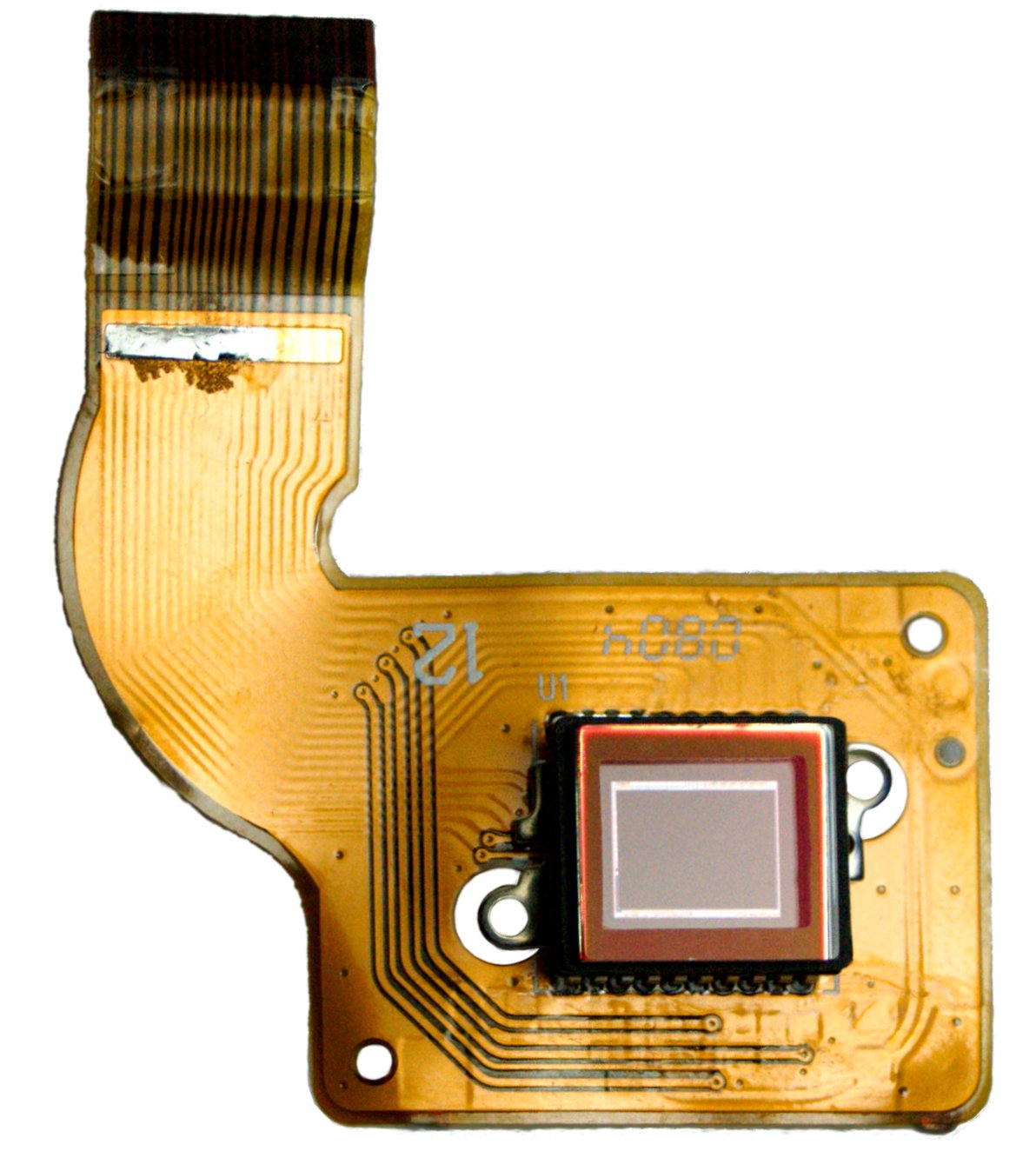|
Purple Fringing
In photography (particularly digital photography), purple fringing (sometimes called PF) is the term for an unfocused purple or magenta "ghost" image on a photograph. This optical aberration is generally most visible as a coloring and lightening of dark edges adjacent to bright areas of broad-spectrum illumination, such as daylight or various types of gas-discharge lamps. Lenses in general exhibit axial chromatic aberration, in which different colors of light do not focus in the same plane. Normally, lens designs are optimized so that two or more (at least three for apochromatic lenses) wavelengths of light in the visible spectrum focus at the same plane. Wavelengths very different from those optimized in the design process may be severely out of focus while the reference colors are in focus; this axial chromatic aberration is usually severe at short wavelengths (violet). Lens performance may be poor for such wavelengths in other ways too, including an increase in flare due ... [...More Info...] [...Related Items...] OR: [Wikipedia] [Google] [Baidu] |
Purple Fringing
In photography (particularly digital photography), purple fringing (sometimes called PF) is the term for an unfocused purple or magenta "ghost" image on a photograph. This optical aberration is generally most visible as a coloring and lightening of dark edges adjacent to bright areas of broad-spectrum illumination, such as daylight or various types of gas-discharge lamps. Lenses in general exhibit axial chromatic aberration, in which different colors of light do not focus in the same plane. Normally, lens designs are optimized so that two or more (at least three for apochromatic lenses) wavelengths of light in the visible spectrum focus at the same plane. Wavelengths very different from those optimized in the design process may be severely out of focus while the reference colors are in focus; this axial chromatic aberration is usually severe at short wavelengths (violet). Lens performance may be poor for such wavelengths in other ways too, including an increase in flare due ... [...More Info...] [...Related Items...] OR: [Wikipedia] [Google] [Baidu] |
Optical Axis
An optical axis is a line along which there is some degree of rotational symmetry in an optical system such as a camera lens, microscope or telescopic sight. The optical axis is an imaginary line that defines the path along which light propagates through the system, up to first approximation. For a system composed of simple lenses and mirrors, the axis passes through the center of curvature of each surface, and coincides with the axis of rotational symmetry. The optical axis is often coincident with the system's mechanical axis, but not always, as in the case of off-axis optical systems. For an optical fiber, the optical axis is along the center of the fiber core, and is also known as the ''fiber axis''. See also * Ray (optics) * Cardinal point (optics) * Antenna boresight In telecommunications and radar engineering, antenna boresight is the axis of maximum gain (maximum radiated power) of a directional antenna. For most antennas the boresight is the axis of symmetry of t ... [...More Info...] [...Related Items...] OR: [Wikipedia] [Google] [Baidu] |
Science Of Photography
The science of photography is the use of chemistry and physics in all aspects of photography. This applies to the camera, its lenses, physical operation of the camera, electronic camera internals, and the process of developing Photographic film, film in order to take and develop pictures properly. Optics Camera obscura The fundamental technology of most photography, whether digital or analog, is the camera obscura effect and its ability to transform of a three dimensional scene into a two dimensional image. At its most basic, a camera obscura consists of a darkened box, with a very small hole in one side, which projects an image from the outside world onto the opposite side. This form is often referred to as a pinhole camera. When aided by a lens, the hole in the camera doesn't have to be tiny to create a sharp and distinct image, and the exposure time can be decreased, which allows cameras to be handheld. Lenses A photographic lens is usually composed of several lens ... [...More Info...] [...Related Items...] OR: [Wikipedia] [Google] [Baidu] |
Stray Light
Stray light is light in an optical system, which was not intended in the design. The light may be from the intended source, but follow paths other than intended, or it may be from a source other than the intended source. This light will often set a working limit on the dynamic range of the system; it limits the signal-to-noise ratio or contrast ratio, by limiting how dark the system can be. Ocular straylight is stray light in the human eye. Optical systems Monochromatic light Optical measuring instruments that work with monochromatic light, such as spectrophotometers, define stray light as light in the system at wavelengths (colors) other than the one intended. The stray light level is one of the most critical specifications of an instrument. For instance, intense, narrow absorption bands can easily appear to have a peak absorption less than the true absorption of the sample because the ability of the instrument to measure light transmission through the sample is limited by the ... [...More Info...] [...Related Items...] OR: [Wikipedia] [Google] [Baidu] |
Interpolation
In the mathematical field of numerical analysis, interpolation is a type of estimation, a method of constructing (finding) new data points based on the range of a discrete set of known data points. In engineering and science, one often has a number of data points, obtained by sampling or experimentation, which represent the values of a function for a limited number of values of the independent variable. It is often required to interpolate; that is, estimate the value of that function for an intermediate value of the independent variable. A closely related problem is the approximation of a complicated function by a simple function. Suppose the formula for some given function is known, but too complicated to evaluate efficiently. A few data points from the original function can be interpolated to produce a simpler function which is still fairly close to the original. The resulting gain in simplicity may outweigh the loss from interpolation error and give better performance ... [...More Info...] [...Related Items...] OR: [Wikipedia] [Google] [Baidu] |
Aperture
In optics, an aperture is a hole or an opening through which light travels. More specifically, the aperture and focal length of an optical system determine the cone angle of a bundle of rays that come to a focus in the image plane. An optical system typically has many openings or structures that limit the ray bundles (ray bundles are also known as ''pencils'' of light). These structures may be the edge of a lens or mirror, or a ring or other fixture that holds an optical element in place, or may be a special element such as a diaphragm placed in the optical path to limit the light admitted by the system. In general, these structures are called stops, and the aperture stop is the stop that primarily determines the ray cone angle and brightness at the image point. In some contexts, especially in photography and astronomy, ''aperture'' refers to the diameter of the aperture stop rather than the physical stop or the opening itself. For example, in a telescope, the apertur ... [...More Info...] [...Related Items...] OR: [Wikipedia] [Google] [Baidu] |
F-number
In optics, the f-number of an optical system such as a camera lens is the ratio of the system's focal length to the diameter of the entrance pupil ("clear aperture").Smith, Warren ''Modern Optical Engineering'', 4th Ed., 2007 McGraw-Hill Professional, p. 183. It is also known as the focal ratio, f-ratio, or f-stop, and is very important in photography. It is a dimensionless number that is a quantitative measure of lens speed; increasing the f-number is referred to as ''stopping down''. The f-number is commonly indicated using a lower-case hooked f with the format ''N'', where ''N'' is the f-number. The f-number is the reciprocal of the relative aperture (the aperture diameter divided by focal length). Notation The f-number is given by: N = \frac \ where f is the focal length, and D is the diameter of the entrance pupil (''effective aperture''). It is customary to write f-numbers preceded by "", which forms a mathematical expression of the entrance pupil diamet ... [...More Info...] [...Related Items...] OR: [Wikipedia] [Google] [Baidu] |
Light Scattering By Particles
Light scattering by particles is the process by which small particles (e.g. ice crystals, dust, atmospheric particulates, cosmic dust, and blood cells) scatter light causing optical phenomena such as the blue color of the sky, and halos. Maxwell's equations are the basis of theoretical and computational methods describing light scattering, but since exact solutions to Maxwell's equations are only known for selected particle geometries (such as spherical), light scattering by particles is a branch of computational electromagnetics dealing with electromagnetic radiation scattering and absorption by particles. In case of geometries for which analytical solutions are known (such as spheres, cluster of spheres, infinite cylinders), the solutions are typically calculated in terms of infinite series. In case of more complex geometries and for inhomogeneous particles the original Maxwell's equations are discretized and solved. Multiple-scattering effects of light scattering by particl ... [...More Info...] [...Related Items...] OR: [Wikipedia] [Google] [Baidu] |
Photographic Filter
In photography and cinematography, a filter is a camera accessory consisting of an optical filter that can be inserted into the optical path. The filter can be of a square or oblong shape and mounted in a holder accessory, or, more commonly, a glass or plastic disk in a metal or plastic ring frame, which can be screwed into the front of or clipped onto the camera lens. Filters modify the images recorded. Sometimes they are used to make only subtle changes to images; other times the image would simply not be possible without them. In monochrome photography, coloured filters affect the relative brightness of different colours; red lipstick may be rendered as anything from almost white to almost black with different filters. Others change the colour balance of images, so that photographs under incandescent lighting show colours as they are perceived, rather than with a reddish tinge. There are filters that distort the image in a desired way, diffusing an otherwise sharp image, a ... [...More Info...] [...Related Items...] OR: [Wikipedia] [Google] [Baidu] |
Image Sensor
An image sensor or imager is a sensor that detects and conveys information used to make an image. It does so by converting the variable attenuation of light waves (as they pass through or reflect off objects) into signals, small bursts of current that convey the information. The waves can be light or other electromagnetic radiation. Image sensors are used in electronic imaging devices of both analog and digital types, which include digital cameras, camera modules, camera phones, optical mouse devices, medical imaging equipment, night vision equipment such as thermal imaging devices, radar, sonar, and others. As technology changes, electronic and digital imaging tends to replace chemical and analog imaging. The two main types of electronic image sensors are the charge-coupled device (CCD) and the active-pixel sensor ( CMOS sensor). Both CCD and CMOS sensors are based on metal–oxide–semiconductor (MOS) technology, with CCDs based on MOS capacitors and CMOS sensors ba ... [...More Info...] [...Related Items...] OR: [Wikipedia] [Google] [Baidu] |
Infrared
Infrared (IR), sometimes called infrared light, is electromagnetic radiation (EMR) with wavelengths longer than those of visible light. It is therefore invisible to the human eye. IR is generally understood to encompass wavelengths from around 1 millimeter (300 GHz) to the nominal red edge of the visible spectrum, around 700 nanometers (430 THz). Longer IR wavelengths (30 μm-100 μm) are sometimes included as part of the terahertz radiation range. Almost all black-body radiation from objects near room temperature is at infrared wavelengths. As a form of electromagnetic radiation, IR propagates energy and momentum, exerts radiation pressure, and has properties corresponding to both those of a wave and of a particle, the photon. It was long known that fires emit invisible heat; in 1681 the pioneering experimenter Edme Mariotte showed that glass, though transparent to sunlight, obstructed radiant heat. In 1800 the astronomer Sir William Herschel ... [...More Info...] [...Related Items...] OR: [Wikipedia] [Google] [Baidu] |





